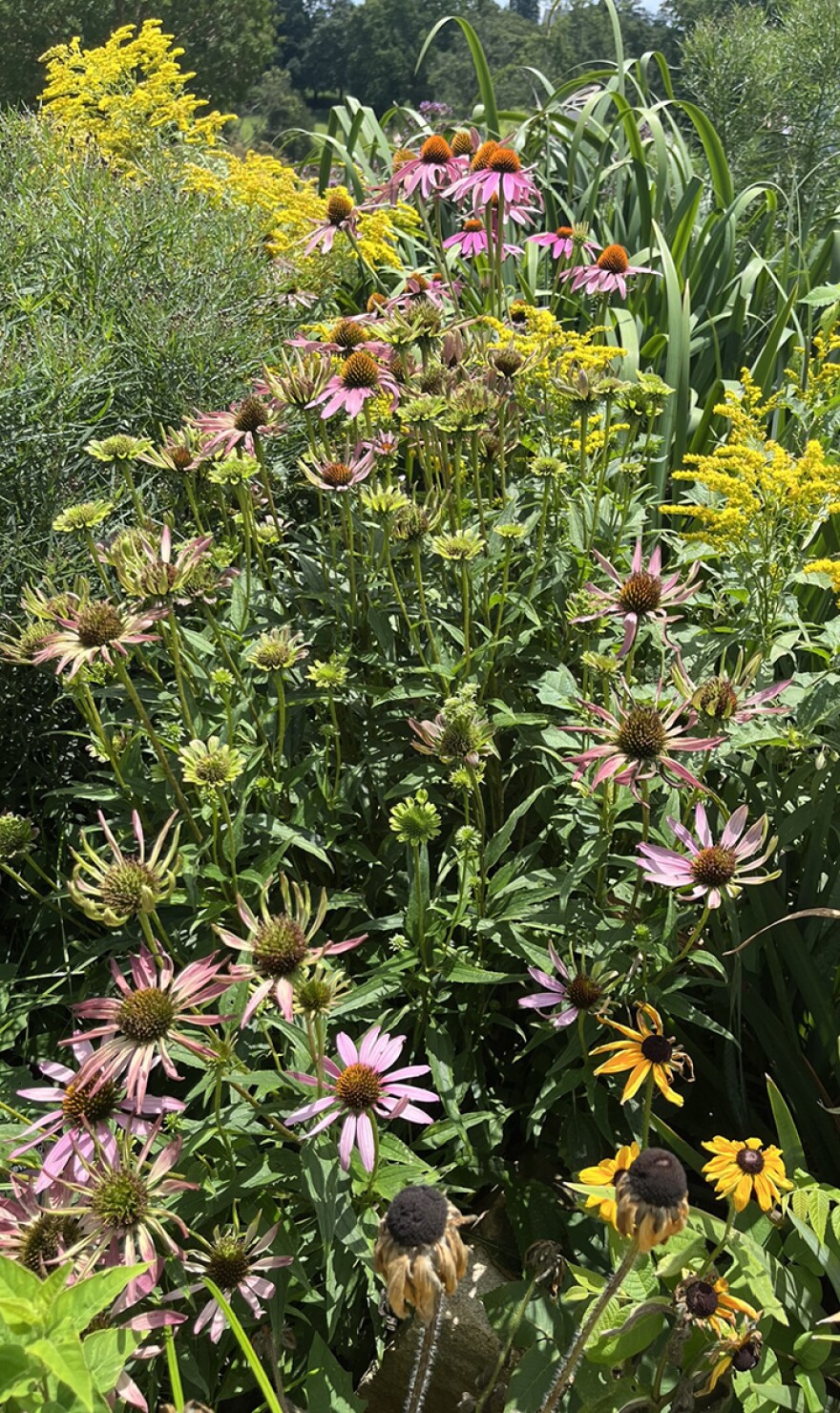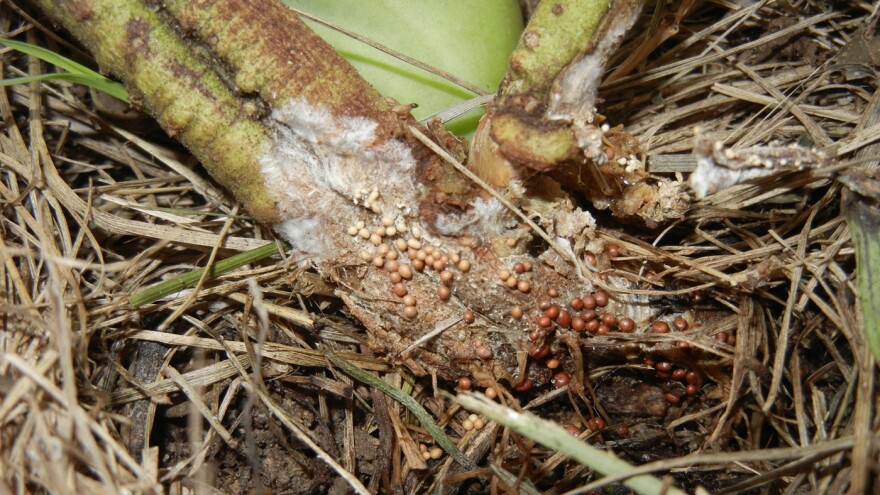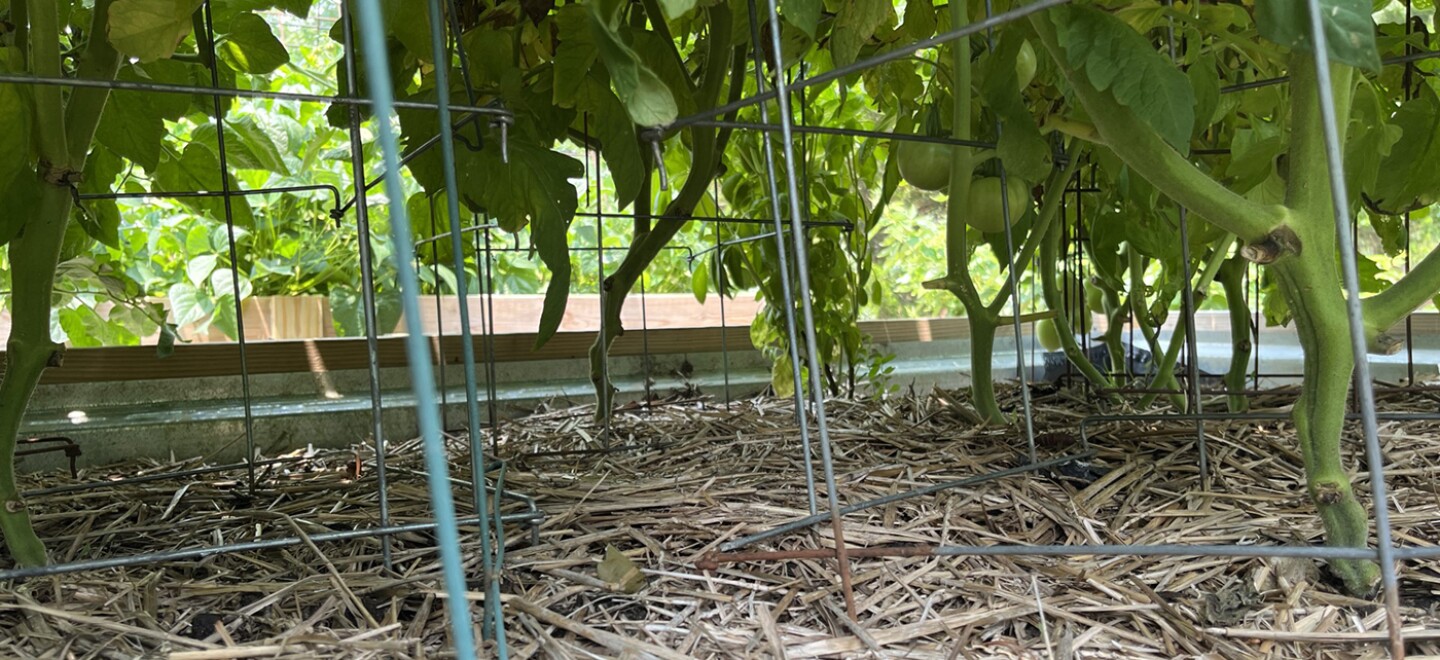Even though it is hot outside I try to remember August is a transition month from summer to fall in the garden. Late summer (aka now) is also when the spring flowering shrubs set their flower buds. A great spring display can quickly be pruned away by overzealous gardeners in the late summer or autumn the year before.
Do your best to minimize pruning spring flowering shrubs such as Forsythia spp., azaleas and other Rhododendron spp., Big leaf Hydrangea, H. macrophylla, Weigelia, Viburnum, Deutzia, bottlebrush plant, flowering quince, lilac, fringe tree, mountain laurel and other woody plants that bloom in spring. Prune these shrubs after they bloom next year.
Much goes on in August, when fall web worms and orange striped oak worms eat the leaves on deciduous trees. The fall web worm moth caterpillars, Hyphantria cunea, feed on the leaves within the ever-expanding webs they spin. The orange striped oak worm moth caterpillar, Anisota senatoria, feeds on the leaves of an oak tree’s bottom branches — working their way up the branch by branch. These late summer defoliators do not harm the trees since they will be dropping their leaves soon anyway. On the positive side, caterpillars are a nutritious food source for birds and other animals so consider their presence an end-of-the-season power meal for our feathered friends.
I encourage you to not give up on the vegetable garden, because early to mid-August marks the fall garden planting. In zones 6a and 6b, now is the time to sow salad green seeds along with radish, turnip, leek and beet seeds. Plant the cole crops — which include kale, collards, broccoli, cauliflower, cabbage, etc. — for harvesting later this fall.
In zones 7a and 7b, another sowing of corn and bush beans can be squeezed in with carrots, turnips, leeks, beets and cole crops in early August. Due to the heat wave, put off sowing the salad greens and radishes for later in the month.

The heat and humidity of summer creates the perfect conditions for disease in our gardens, too. Stay curious about random wilting plants or plants with sections of discolored leaves or flowers growing oddly when on your garden walkabouts. I always check out the base of a plant — I’m looking for soft tissue, black roots or white thread-like growth on the lower stems or trunks.
For proper identification, bring a sample of the problem plant to your local Cooperative Extension office. An entire sample makes diagnosis easier, and the Cooperative Extension will provide information about the problem and also share options on how to manage the issue. After working with the plant in question remember to clean and spray all the tools used, plus the bottom of your shoes, with 91% isopropyl alcohol to prevent spreading whatever it might be to other plants.

I recently had the ever-dreaded Southern Blight, Sclerotium rolfsii, diagnosed in a section of my flower garden. This soil-borne disease loves heat, humidity and moist, acidic soil — and has a host range of 500 plant species. Sounds like my garden! Southern Blight is typically found on the lower stems and crown of a plant as a white mold growth with turnip seed–looking spores, or sclerotia, at ground level. The sclerotia are easily spread by shoes, tools, rain and other vectors. Bagging up and removing both infected plants and the surrounding soil is the first step a home gardener should take when faced with this fungal challenge. Carefully dig and bag up the soil to a depth of 4 inches and 1 foot out from the center of each infected plant. Dispose of the filled bags offsite.
With this disease in my perennial border, I have more options than if it were in my home vegetable garden. There are effective fungicide drenches that homeowners can use to control Southern Blight on nonfood crops. This is not the case for food grown crops. Prevention is key: Changing the environmental conditions by increasing air flow around and through a plant decreases the incidence of disease.
This means limbing up plants and opening up tight foliage growth with selective pruning. For example, in my vegetable garden I removed the bottom 12 inches of leaves from each tomato plant weeks ago;I encourage you to do the same.
As gardeners, we often consider August the countdown to September’s cooler weather. I challenge you to reconsider August as the gateway to the fall garden instead.
Happy Gardening!
Peggy


